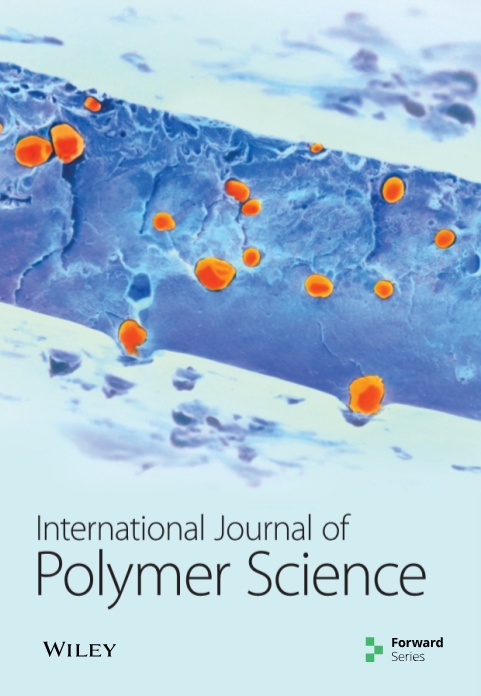Characterization of Thermal Properties of Highland Bamboo Fibers
IF 4.4
4区 化学
Q2 POLYMER SCIENCE
引用次数: 1
Abstract
Characterization of thermal properties of different ages highland bamboo fiber attributes extracted chemically and mechanically is the focus of this study. Samples of length 25–30 cm were harvested at various ages from the middle of the stem, which was then soaked in different NaOH weight-by-volume concentrations and soaked in water for different days. Using a rolling machine that has three rollers, the fiber is mechanically extracted. The sample was subjected to different analyses for each corresponding age (1, 2, and 3 years) and NaOH concentration (untreated, 1%, 2%, and 3%) levels using thermogravimetric analysis, differential scanning calorimetry, derivative thermogravimetric analysis, and differential thermal analysis for thermal property characterization. Scanning electron microscopy (SEM) was used for morphological studies, whereas Fourier transform infrared spectroscopy (FTIR) was used for the identification of functional groups of the fibers. The surface appearance of the cell wall and microfibril aggregates were changed by alkali treatment. From the SEM results, 3% NaOH-treated fiber resulted in more wrinkles on the surface of bamboo fibers when compared with the 1% and 2% NaOH bamboo fibers. Using thermal analysis measurements, this study investigated that weight loss increased as alkali concentration increased, but the scenario functioned for proper concentration. The first degradation stage is responsible for the biggest weight loss since it includes the disintegration of all of the fiber’s primary components (cellulose, hemicellulose, and lignin).高原竹纤维热性能的表征
对不同树龄高原竹纤维的热性能进行表征是本研究的重点。长度为25-30的样品 cm,然后将其浸泡在不同重量和体积浓度的NaOH中,并在水中浸泡不同的天数。使用一台有三个辊的轧制机,以机械方式提取纤维。使用热重分析、差示扫描量热法、导数热重分析和差示热分析对样品进行不同的分析,以确定每个相应的年龄(1、2和3年)和NaOH浓度(未处理的,1%、2%和3%)水平的热性能表征。扫描电子显微镜(SEM)用于形态研究,而傅立叶变换红外光谱(FTIR)用于识别纤维的官能团。碱处理改变了细胞壁和微纤维聚集体的表面形貌。从SEM结果来看,与1%和2%的NaOH竹纤维相比,3%的NaOH处理纤维在竹纤维表面产生了更多的褶皱。通过热分析测量,本研究调查了重量损失随着碱浓度的增加而增加,但该场景在适当的浓度下起作用。第一个降解阶段造成了最大的重量损失,因为它包括纤维的所有主要成分(纤维素、半纤维素和木质素)的分解。
本文章由计算机程序翻译,如有差异,请以英文原文为准。
求助全文
约1分钟内获得全文
求助全文
来源期刊

International Journal of Polymer Science
POLYMER SCIENCE-
CiteScore
6.10
自引率
0.00%
发文量
55
审稿时长
>12 weeks
期刊介绍:
The International Journal of Polymer Science is a peer-reviewed, Open Access journal that publishes original research articles as well as review articles on the chemistry and physics of macromolecules.
 求助内容:
求助内容: 应助结果提醒方式:
应助结果提醒方式:


